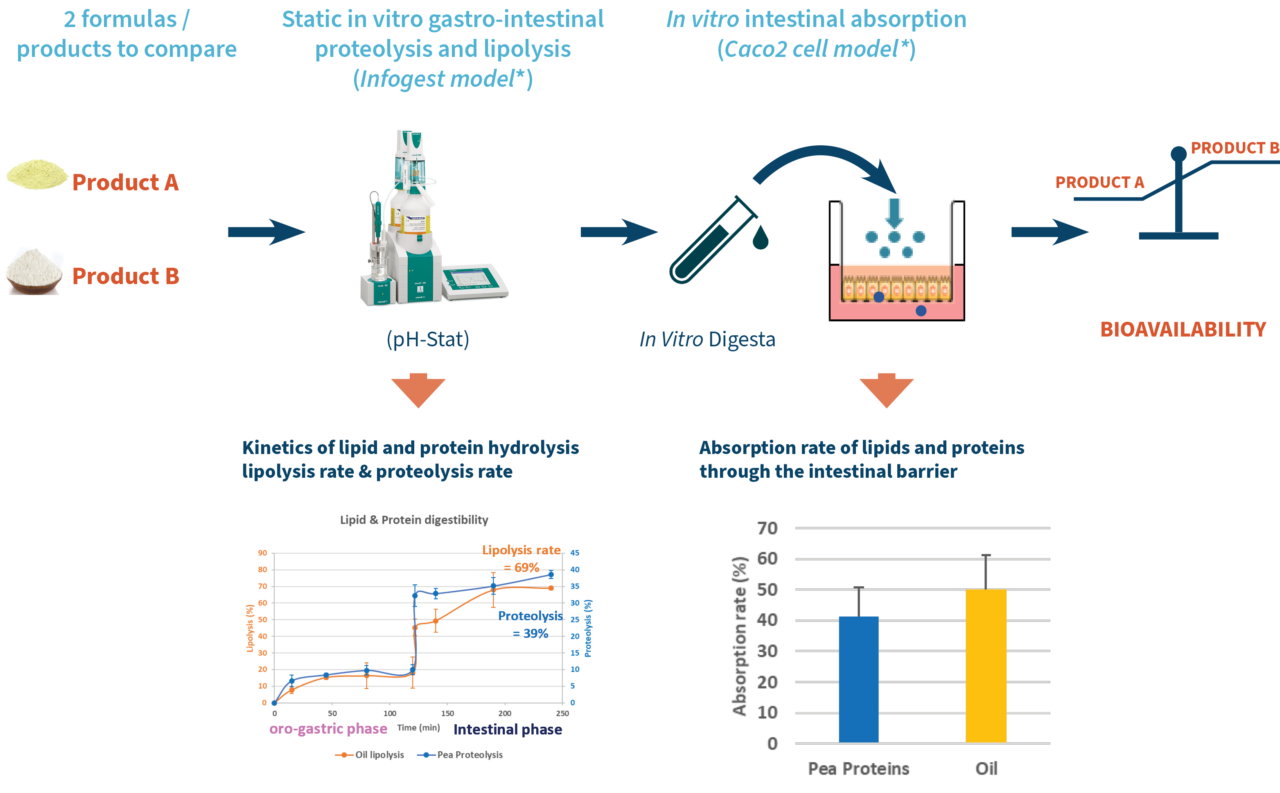In Vitro study of the digestibility and intestinal absorption of lipids and proteins
Context
Nutrient bioavailability is defined as the fraction of nutrients that are absorbed and used by the organism. The first step in making a nutrient bioavailable is its releasing from the “food matrix” and its conversion into a chemical form that can be absorbed by the digestive mucosa.
Many factors modulate this bioavailability. Besides the specific parameters of the consumer (age, gender, nutritional status, physiological or pathological states…), several factors intrinsic to the food matrix can also significantly modify the bioavailability of nutrients such as structure, composition, chemical form of the nutrient, interactions with other nutrients…
All these parameters must be taken into account during the development of any formula or product.
Challenge
Impact of the processing of plant-based proteins and their formulation with lipids on their respective bioavailability
In vitro work flow to evaluate nutrient bioavailability

Kinetics of lipid and protein in vitro digestion of a mix pea proteins + rapeseed oil
*INFOGEST protocol (Brodkorb et al. 2019, https://doi.org/10.1038/s41596-018-0119-1) simulate in vitro, the physicochemical processes occurring inside the human gastrointestinal tract (mouth, stomach, and small intestine) during the digestion of foods, by mimicking the enzymatic (digestive enzymes (proteases, lipases)) and physicochemical (electrolyte solution and co-factors) composition of the different digestive fluids (salivary, gastric and intestinal)) to which the food is exposed in the gastrointestinal tract, from the oral phase to the intestinal phase.
*Caco-2 intestinal cell model = cell lines derived from a human ileo-caecal adenocarcinoma reproducing a set of characteristics of differentiated intestinal cells. In culture, these cells have the capacity to differentiate into mature enterocytes to form an epithelium mimicking the intestinal barrier. They express the morphological and functional characteristics of the intestinal epithelium: microvilli to form a brush border, tight junctions between cells, enzymes specific to enterocytes.
Why choosing this work flow ?
- useful in predicting outcomes of in vivo digestion
- speed of implementation
- screening possibility of a large number of formula at a lower cost
- simultaneous study of lipid and protein bioavailability
- obtaining predictive data of nutrient bioavailability of complex dietary matrices
